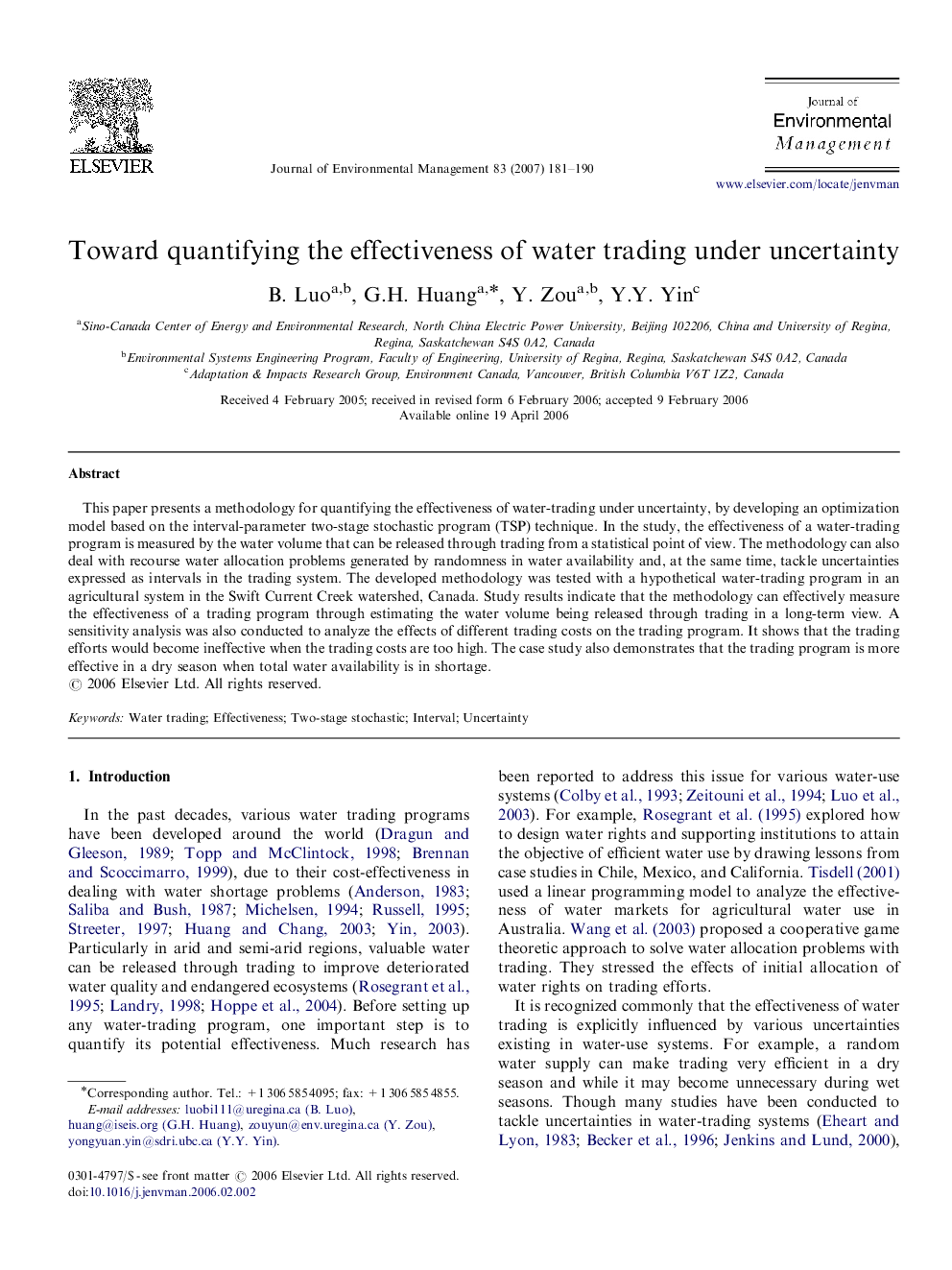| Article ID | Journal | Published Year | Pages | File Type |
|---|---|---|---|---|
| 1058767 | Journal of Environmental Management | 2007 | 10 Pages |
This paper presents a methodology for quantifying the effectiveness of water-trading under uncertainty, by developing an optimization model based on the interval-parameter two-stage stochastic program (TSP) technique. In the study, the effectiveness of a water-trading program is measured by the water volume that can be released through trading from a statistical point of view. The methodology can also deal with recourse water allocation problems generated by randomness in water availability and, at the same time, tackle uncertainties expressed as intervals in the trading system. The developed methodology was tested with a hypothetical water-trading program in an agricultural system in the Swift Current Creek watershed, Canada. Study results indicate that the methodology can effectively measure the effectiveness of a trading program through estimating the water volume being released through trading in a long-term view. A sensitivity analysis was also conducted to analyze the effects of different trading costs on the trading program. It shows that the trading efforts would become ineffective when the trading costs are too high. The case study also demonstrates that the trading program is more effective in a dry season when total water availability is in shortage.
